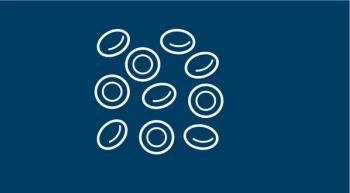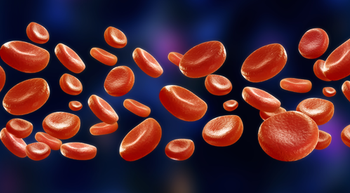
Stress Management for Nurses
Stress management is vital for any profession, but for oncology nurses, stress management is crucial to not only helping themselves but also helping their patients.
Nursing involves truly unique stressors, that if left unmanaged, can lead to equally unique negative outcomes. These include Burnout (A state of physical, emotional, and mental exhaustion caused by a depletion of the ability to cope with one’s environment, particularly the work environment)1 and Compassion Fatigue (Physical, emotional, and spiritual exhaustion resulting from caring for patients and witnessing pain and suffering).2 The principles of Stress Management are the same regardless of one’s job but can provide a very helpful framework for nurses to decrease job stress and improve health outcomes for themselves and their patients
Stress Awareness involves identifying one’s personal sources of stress (stressors) as well as identifying one’s personal reactions to stress. There are six work domains relevant to a nurses’ stress levels.
Workload involves the amount of work required, the frequency of unexpected events and the suffering acuity of patients.
Control refers to participation in work decisions, quality of management leadership, and patient outcomes.
Reward describes recognition for achievements as well as opportunities for bonuses and raises.
Community includes the frequency of supportive work interactions and the closeness of personal friendships at work.
Fairness refers to the administration’s dedication to equal consideration for everyone and clear procedures for allocating rewards and promotions.
Values involve the confidence that one’s personal and organizational mission is meaningful and that there is the potential to contribute to the greater good.
Nurses can go through these domains to identify their own stressors and think about how they are reacting physiologically (e.g., headaches), psychologically (e.g., anxiety or depression), and behaviorally (e.g., missing work, or getting angry with colleagues).
Techniques for managing stress
Once aware, one can recognize when suffering from stress and can begin to implement a number of practical management techniques. First, try to eliminate or modify the severity of the stressor via problem-solving. Relax and focus on nothing but the issue at hand. Identify the real problem. Brainstorm for possible solutions. Select one possible solution and implement it. If it works, celebrate! If it not, go back to brainstorming and trying different solutions.
The six nursing work domains can be a framework for brainstorming ideas. Talk with co-workers to see who may have some of the same concerns and think of ways to make changes among yourselves. Then, approach the administration as a group to ask for help with larger issues, which can also enhance the credibility of the problem if a number of your colleagues echo the same issues.
Next, one can try changing one’s attitude toward or cognitive appraisal of the stressor. There are a number of ways to do this that are quite relevant to nurses. First, a nurse must be clear about the scope of their professional role. A nurse cannot always cure a patient’s illness or disease or solve all problems, however, a nurse can always do something to make a patient, family member, caregiver and/or colleague feel better. A nurse must be absolutely, positively convinced about the incredible value of every nursing intervention performed!
Hope related to health status is a prime example of how nurses can change their cognitive appraisal. There is no such thing as “false hope.” However, what is hoped for, probably will change over time. What is first hoped for in the face of illness or disease is cure or return to full physical and mental health. What is next hoped for is a positive adaptation to partial physical and/or mental health with a good quality of life. This can be a long trajectory with diminishing yet important and valuable hopes. What is finally hoped for is an end of life with all instrumental and emotional business completed in a dignified, pain-free manner, and in the presence of people who care/matter.
Fears and perceptions about the End of Life, both for oneself and one’s patients, are major stressors for nurses. First, our fears about the process of dying that include loss of dignity, pain, and sadness about leaving loved ones. Palliative and Hospice Care are major resources that can significantly mitigate these issues. Next, are fears about being dead. One way to cognitively approach this is the “Two Option Plan.” Option 1 is that there is an Afterlife/Heaven. Most references describe this as beautiful, peaceful, and joyful. There is no pain, suffering, or sadness. The deceased will join ones who have died earlier and in a blink of celestial time, loved ones left behind will also arrive. Option 2 is there is no Afterlife, everything just ends, there is nothing. However, there is no pain, suffering, or sadness. There is no consciousness at all. This is akin to the best night’s sleep one ever had, one just doesn’t wake up. The bottom line is that this is not bad! Everyone has their own personal beliefs about what comes next, and it’s important to not only be conscious of your own but also your patient’s.
The final stress management technique is learning how to change one’s physiological reaction to a stressor from negative to positive by shutting off the chronic release of stress hormones and turning on positive neuro-endocrine-Immune responses such as endogenous opioids. These are naturally occurring opiate-like substances and are pain killers. They are also anti-depressants and enhance the immune system. Fortunately, there are a number of mechanisms that serve both functions. These include exercise, laughter, music (listening to, singing, playing), pets, aromatherapy, meditation, and much more. Allowing you a wide variety of options to find the best technique that fits you.
Stress and its management, particularly for nurses, are complex issues but ones that can be successfully managed. For more information on Stress Management go to
References
1. Maslach C. (1982) Burnout-The cost of caring. Englewood Cliffs, NJ;Spectrum.
2. Aycock, N, Boyle, D. (2009) Interventions to manage compassion fatigue in oncology nursing Clinical Journal of Oncology Nursing, Vol 13:183-191.
3. Fawzy FI, Fawzy NW, Pasnau RO. (1991) Burnout in the health professions. In Judd, Burrows, Lipsitt (eds.), Handbook of Studies on General Hospital Psychiatry, Elsevier Science Publishers B.V.:New York, 119-130.
4. Figley, CR. Treating compassion fatigue. New York,NY: Brunner-Routledge
5. Henry BJ. (2014) Nursing burnout interventions: What is being done? Clinical Journal of Oncology Nursing, Vol 18(2):211-214.
6. Houck, D. (2014) Helping nurses cope with grief and compassion fatigue: An educational intervention. Clinical Journal of Oncology Nursing, Vol 18(4):454-458.
Newsletter
Knowledge is power. Don’t miss the most recent breakthroughs in cancer care.

















































































